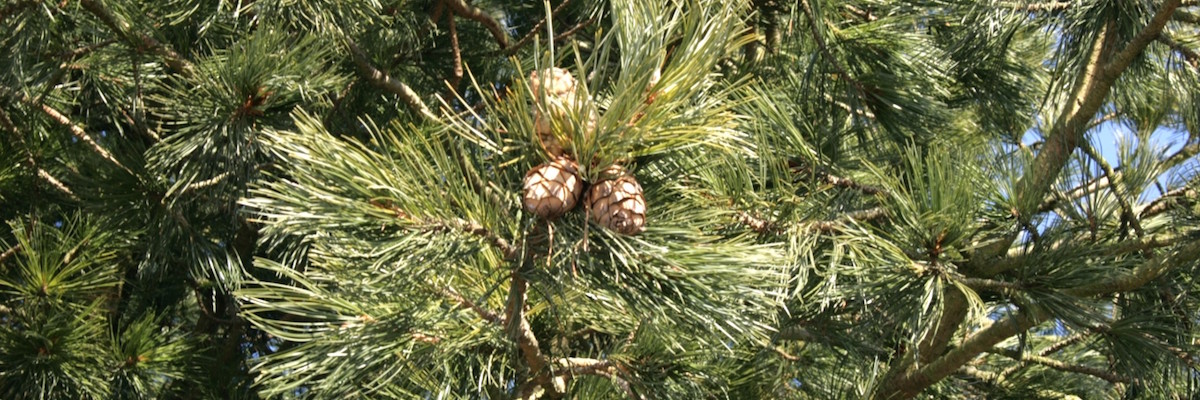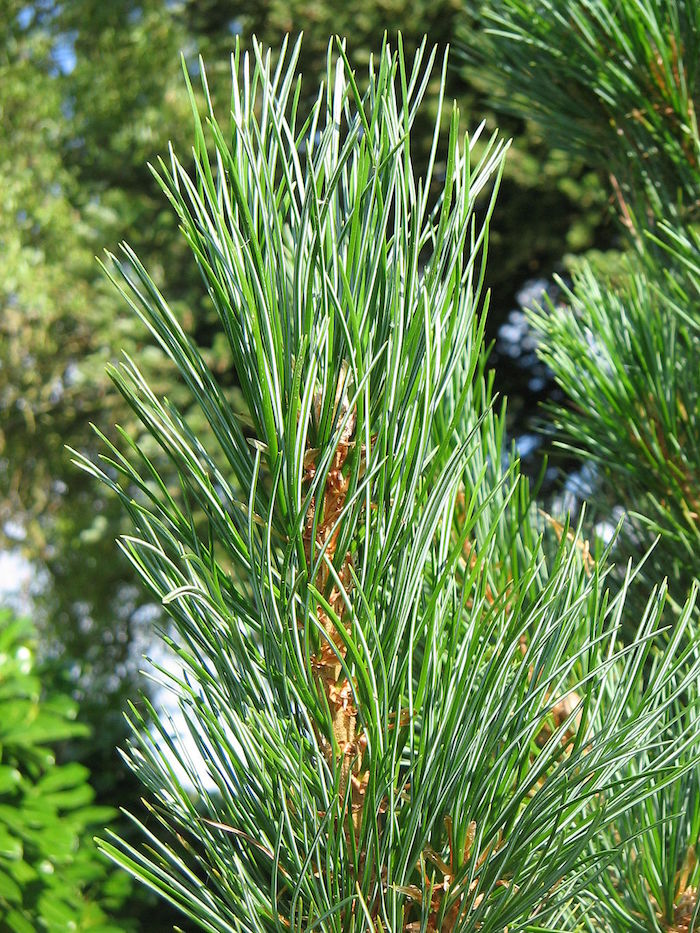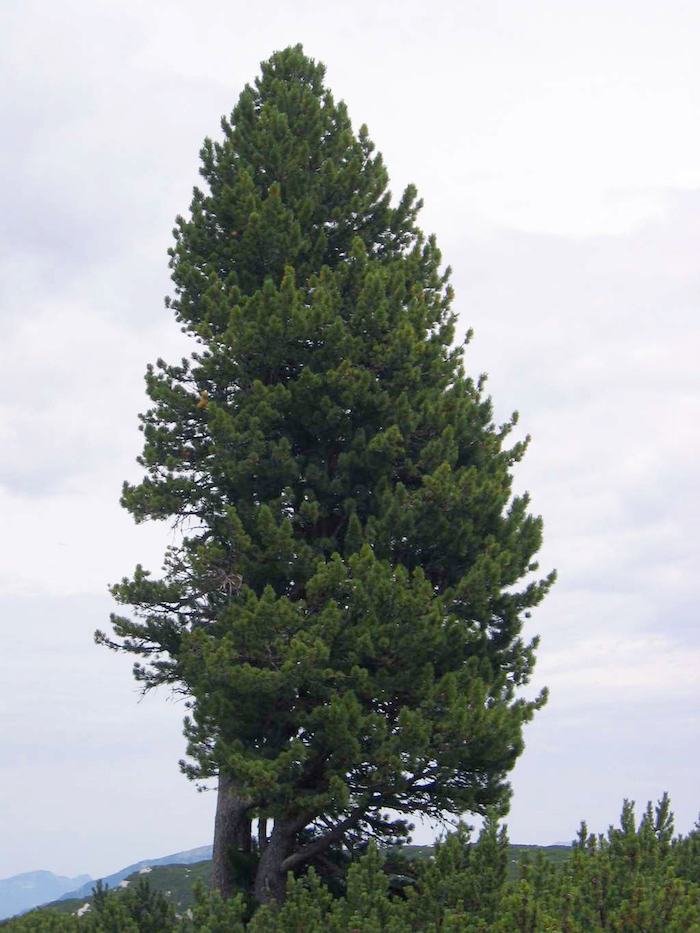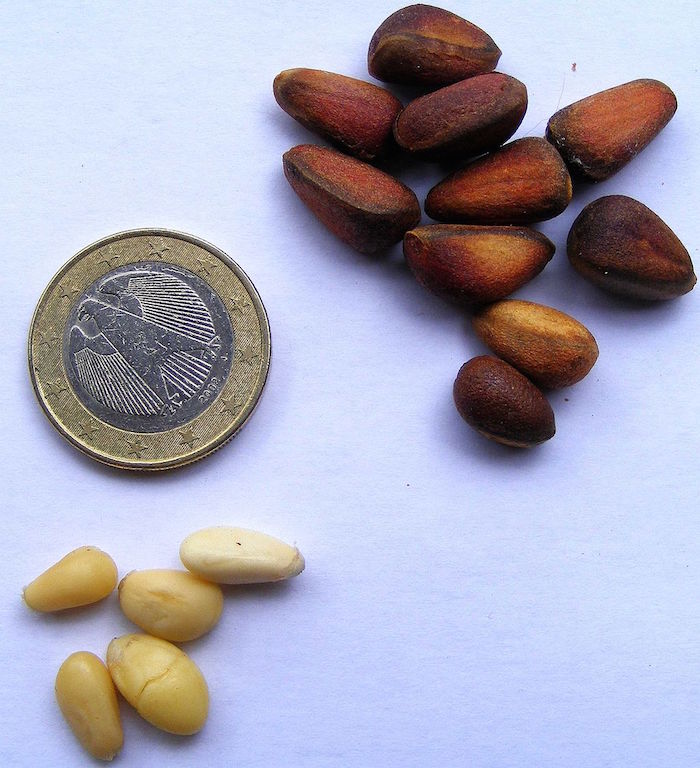
Description:
Swiss Stone Pine is a lovely, slow growing, European pine. Leaves are soft, green to blue needles, 2-5” long and appealing in bundles of five. The needles also have white stomatic lines. Cones are short and oblong, appearing greenish purple when young, maturing to brown.
Photo Credit: Réginald Hulhoven CC by SA 3.0
Swiss stone pine is not a popular timber tree due to its slow growth and commoly curved shape. It is more popularly used for the nuts inside its cones, which are edible. Along with P. pinea, Swiss stone pine is the primary source of European pine nuts, or pignoli. Swiss stone pine nuts, however, are more difficult to harvest due to cone morphology, so it is most popularly planted as a landscape tree. The native range is primarily limited to the Alps, with small pockets in Romania and Ukraine.
Issues:
Swiss stone pine is susceptible to general pine blights and cankers. Interestingly, it is resistant to White Pine Blister rust, a major pest of white pines in North America.
Other Resources:
International Union for Conservation of Nature
Photo Credit: Berger Harald CC By SA 3.0
Swiss Stone Pine nuts, in (right) and out (left) of their shells.
Photo Credit: F. Ceragioli CC by SA 3.0




